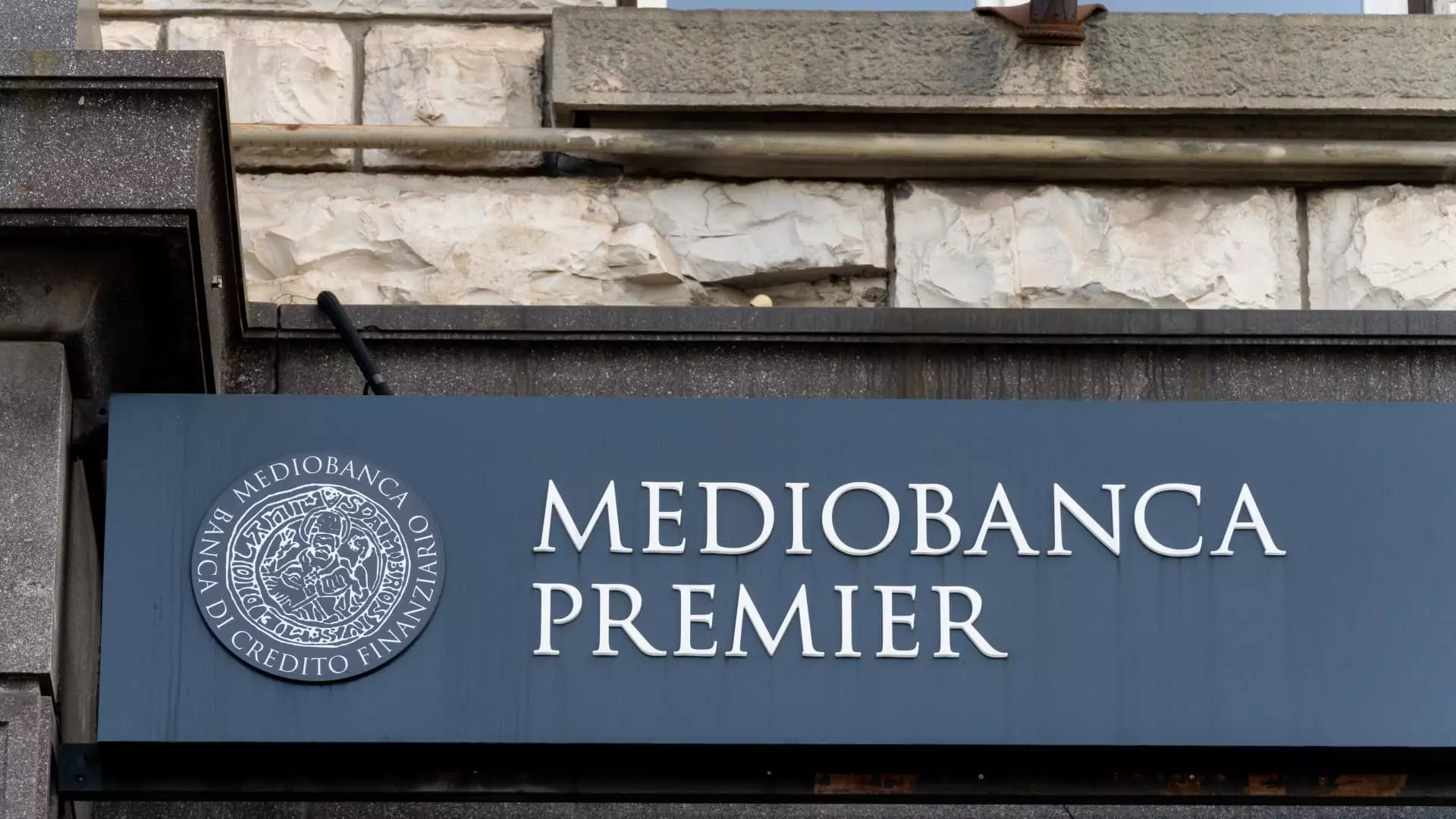The Italian banking landscape is currently embroiled in a significant wave of consolidation efforts, with various institutions eyeing one another for potential mergers and acquisitions. Recently, a notable episode unfolded involving Mediobanca—a prominent player in the sector—and Monte dei Paschi, Italy’s oldest bank. The rejection of Monte dei Paschi’s substantial takeover bid for Mediobanca brings to the fore critical questions concerning the rationale behind such consolidations.
On a Tuesday that could have marked a pivotal moment in Italian banking history, Mediobanca shareholders firmly turned down a staggering €13 billion takeover offer from Monte dei Paschi. In a statement, Mediobanca articulated its position, declaring that the proposal lacked both “industrial and financial rationale.” This rejection underscores the complexity of merging two distinctly positioned banks, where even attractive financial offers can falter if they fail to align with the institutions’ core identities and strategic goals. The assertion that the offer compromises Mediobanca’s identity is poignant; it reflects a broader concern that strategic mergers can sometimes lead to dilution of brand value—particularly in the highly competitive sectors of wealth management and investment banking.
Following the announcement, market reactions suggested a cautious sentiment among investors. Shares in Monte dei Paschi saw a decline of 1.32%, while Mediobanca’s shares dipped 2.7%. Such fluctuations are emblematic of investor anxiety; a failed merger can not only affect stock prices in the immediate term but can also signal underlying vulnerabilities in financial institutions’ strategies. It raises an essential question: Is mounting pressure to consolidate in an already fragile banking environment pushing executives toward hasty decisions?
Monte dei Paschi’s unexpected bid for Mediobanca, which involved exchanging 23 shares of MPS for every 10 of Mediobanca, was couched as a strategic move amid shifting dynamics in the Italian banking sector. Analysts have since expressed skepticism regarding the synergies that could arise from such a combination. Notably, a report from Barclays raised red flags about the strategic merits of this union, emphasizing that the real drivers of value creation remain nebulous. This skepticism mirrors a broader industry hesitation around consolidation, particularly in environments historically fraught with financial instability.
The Italian government, which holds an 11.73% stake in Monte dei Paschi, finds itself in a precarious position. Privatization efforts for the state-rescued bank have been ongoing yet challenging due to its tumultuous past and the complex web of shareholdings. Notably, figures like Francesco Gaetano Caltagirone and Delfin have significant stakes that intertwine with both banks, suggesting a potential misalignment of interests that could complicate future endeavors. It brings into focus the delicate balance between private shareholder interests and public policy objectives, especially as the government pushes for a sustainable turnaround for Monte dei Paschi.
Rome’s attempts to find a suitable partner for Monte dei Paschi have been ongoing, with UniCredit briefly courted as a potential player before negotiations fell through in 2021. Recent activities, including Banco BPM’s acquisition of a 5% stake in MPS, have further muddied the waters. All this occurs within a context where UniCredit itself has expanded its horizons, notably through its recent stake in German lender Commerzbank, raising questions about cross-border ambitions that could redefine the competitive landscape.
The rejection of Monte dei Paschi’s takeover offer by Mediobanca highlights the intricacies and challenges facing the Italian banking sector as it grapples with the consolidation trend. As financial institutions weigh the potential benefits against the pitfalls of merging identities and strategies, the focus remains on crafting a sustainable path forward that resonates with shareholders while maintaining brand integrity. With pressures from both the market and governmental frameworks, the future remains uncertain, yet undeniably pivotal for the banks involved and the broader Italian financial ecosystem. The unfolding narrative is one that exemplifies the delicate interplay of ambition, identity, and strategic clarity in an ever-evolving landscape.

